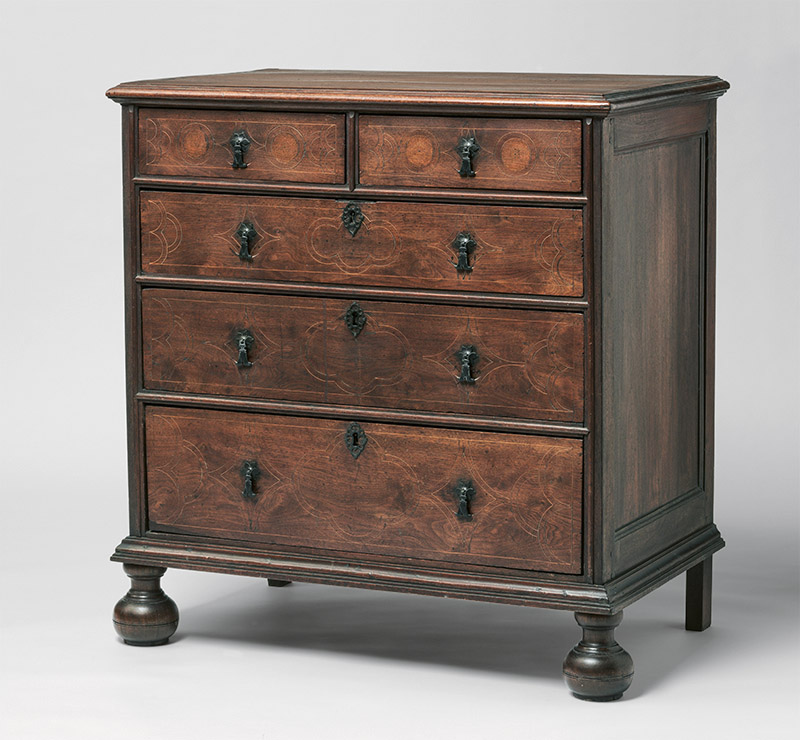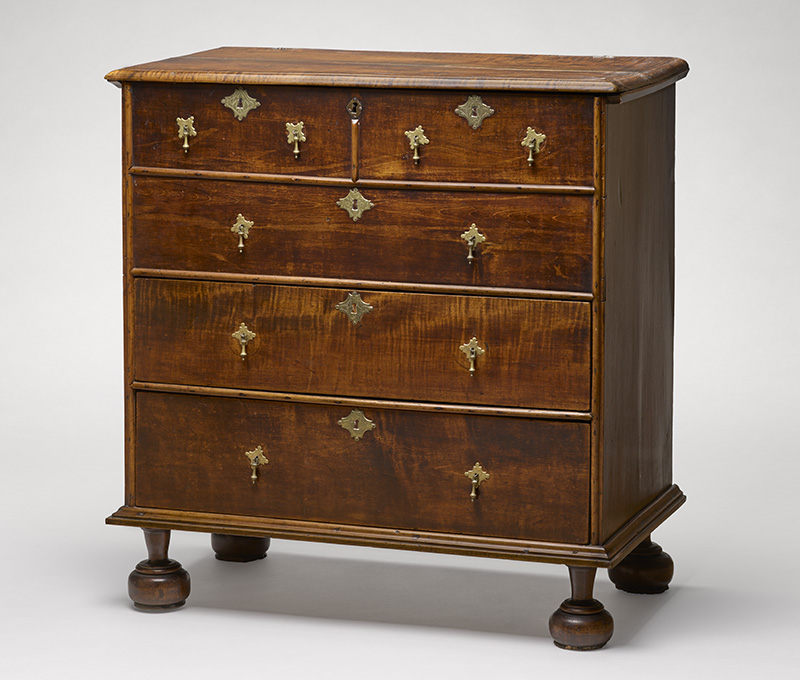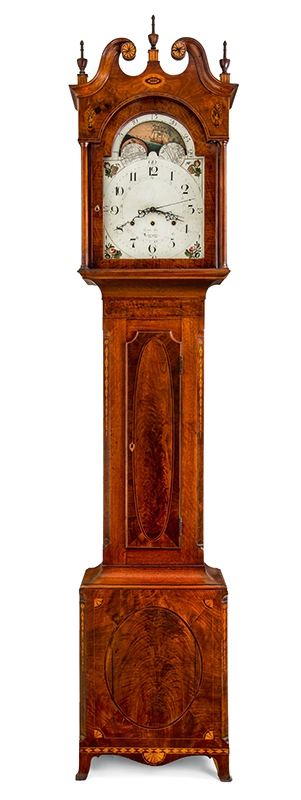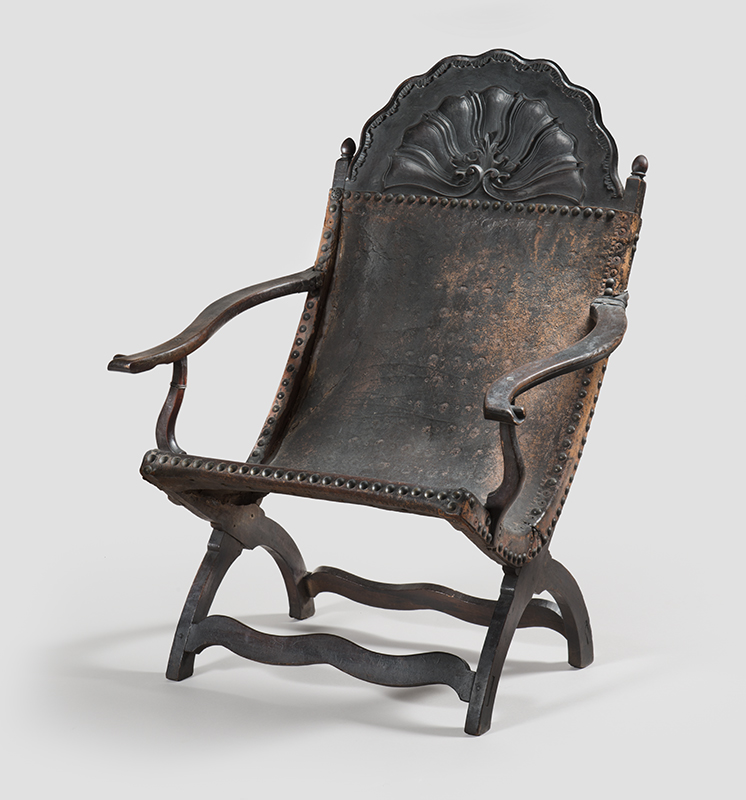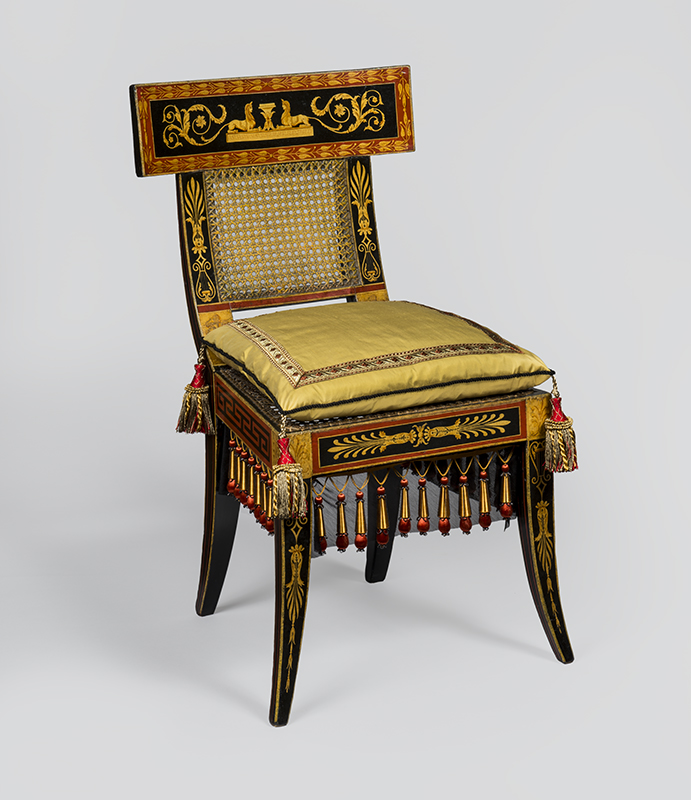Among the Finest to Be Found: American Furniture from the Philadelphia Museum of Art
by Alexandra Alevizatos Kirtley
As PMA director Timothy Rub stated in his foreword, winnowing down the selection to be included in American Furniture 1650–1840: Highlights from the Philadelphia Museum of Art was a daunting task. It drew upon my 20 years of getting to know the PMA’s collection in conjunction with my knowledge of what furniture is held by other museums and in private collections. I also worked with my colleagues in Conservation to survey the furniture and then make treatment priorities.
As I made the selections, I decided to arrange this first-ever PMA furniture catalogue in an unconventional way—geographically, but not by form. Such an organization, I hope, complements the designs and intent of the artisans who made the furniture. And then there was the research. I wanted to mine primary sources as well as absorb all that has been written and observed about our collection—and combine the two. And this was all taking place at an auspicious time: not only did it coincide with the 2016 catalogue and exhibition “Classical Splendor” but it was also concurrent with and under the umbrella of my participation in planning for newly located and reinstalled galleries of early American art where re-interpretations address long-needed calls for more equity and inclusion. I was honored to share some of my favorite works of art during a virtual tour in September hosted by the Decorative Arts Trust. Sharing these exquisite objects with people who were unable to visit the PMA in 2020 was a gratifying experience.
What emerged as I researched and wrote this catalogue was, for me, a wholly new understanding of the PMA’s collection and of the significance of furniture making and artisans in the history of art in North America between the years 1650 to 1840. While choosing “my favorites” in our collection is almost painful and emotionally exhausting, I present here selections that look beyond Philadelphia’s well-established contributions to Baroque and Rococo design.
On a Decorative Arts Trust Study Trip Abroad to Sicily in 2015, I saw in a private collection an extraordinary ebonized chest with ivory inlay in exuberant rinceau, or scrolling vine, patterns. Immediately, my mind went home to Philadelphia—where this chest with neatly arranged compass inlay in geometric patterns was made in the early 18th century (figure 1). Designed with a two-over-three drawer configuration, paneled ends, and turned ball front feet, the chest’s first recorded owners are David Deshler (1713–1792) and Mary Lefevre Deshler (1715–1774). Philadelphia joiners like John Fellows, who owned “a Large Compass” when he died in 1694, were well aware of international artistic styles promoted by people like Daniel Marot (1661–1752) in his Nouveaux livre de lict de different pensees (c. 1703). As European merchants set out to sea on trade and conquest missions, they returned home with goods that ultimately translated to the compartmental pattern of the compass work on these drawer fronts. To me, the inlaid arrangements on the early Philadelphia chest especially relate to Indian and Persian garden and textile designs and ancient Greek and Roman painted “arabesques,” and they represent a corollary to related chests that rely on the figure of the wood, such as the maple drawer fronts of a Rhode Island chest at the PMA (figure 2). After I read thousands—literally thousands—of probate inventories detailing what Philadelphians who died between 1682 and 1800 owned, it comes as no surprise to me that Philadelphia’s colonists—patrons and artisans alike—were cognizant of and participants in an international visual language.
Several years ago, I happened to ask my friend Stiles T. Colwill, an interior designer, collector, and former curator, if he knew how Mrs. Legum—a well-known Baltimore collector—came to donate to the PMA a double chest signed by the free Black cabinetmaker Thomas Gross (1775–1839) (figure 3). “KNOW?!” he replied, “Gregory Weidman and I told her to donate it to you!” And thus, I learned about how the stately mahogany chest made its way from my hometown to the PMA. As I explain in the introductory essay on the formation of the PMA’s furniture collection, Naomi (Pudgy) Hendler Legum (1917–1994) acquired this chest in the 1960s after she donated a desk and bookcase made in Annapolis by John Shaw (1745–1829) to the White House. When Weidman and Colwill, then curators at the Maryland Historical Society, examined it they found the signature “Thomas Gross /Maker” on the bottom of the lowermost drawer. Believing it looked more like Philadelphia than Baltimore, they called former curator Beatrice Garvan, who found Gross’s name in the directory section reserved for “Free Blacks.” And the rest, as they say, is history.
Searching for information on Gross’s life—and many in our Black communities—is more difficult than researching the biographies of white artisans. While not too much is yet known about Gross, this elegant and meticulously finished double chest on high straight bracket feet shows him to be a skilled workman. When past Decorative Arts Trust Summer Research Grant recipient Emelie Gevalt was researching the chest, she asked to see the signature. As I removed the drawer, visitors in the galleries flocked to it. I reported that reaction to our reinstallation team, which led PMA curatorial assistant Rosalie Hooper, a Decorative Arts Trust scholarship recipient, to mount an installation of the chest with the drawer removed and the signature visible. Our new galleries will feature a take on that, in order both to share the thrill of seeing this artisan’s sure-handed signature and to draw attention to the chest.
As I write in the catalogue entry on this piece, “The number of enslaved and free people of African descent who made, carved, painted, ornamented, upholstered, or otherwise contributed to furniture making in colonial North America and the early years of the United States is impossible to determine because their work was almost always anonymous—and often conscripted. However, it is undoubtedly more substantial than is currently credited. By signing his name as the maker, Gross left this double chest not only as a tribute to his own artistry as a free Black cabinetmaker, but also as a testament to the many Black artisans in early America, both free and enslaved, whose talents remain unrecognized.”
Surprisingly, the PMA’s collection of clocks is not as broad and extensive as many would assume it is or should be. Although we have a handful of true stars, we are thrilled to add three more in the form of promised gifts from the Pennsylvania collectors Leslie Miller (the PMA’s Board chair) and Richard Worley—Trust members who supported the catalogue project and to whom the volume is dedicated. This 8-day clock movement was made late in the career of the German-born and trained clockmaker John George Hoff (1733–1816), who worked in Lancaster, PA, from the late 1760s until his death (figure 4). Behind the painted dial plate is one of his most sophisticated movements—an extraordinary musical chimes that still play a remarkable range of delightful melodies.
Living in a digital age when we can hear recorded music with the ease of a click and a download, we often forget how such chimes must have been treasured in a domestic setting. The case in which the movement is set closely resembles the Neoclassical furniture of early-19th-century Baltimore, which was a close trade partner with Lancaster. However, close examination of the clock’s case reveals a signature of the English-born and trained cabinetmaker Chicheley Milley (1777–1820), who brought to Lancaster the same British design influences (attenuated proportions, splay bracket feet, geometric veneers, lightwood marquetry and string inlay) that influenced Baltimore cabinetmakers. Milley is an elusive character, and hopefully more information will soon surface about him and his impact on Lancaster furniture of the first two decades of the 19th century.
Our collections of New England, New York, and Southern material are not as encyclopedic as our holdings of furniture made in Philadelphia and Southeastern Pennsylvania, but they are boutique—with significant treasures that are well recognized and well published. Through an effort to expand the department’s illustration of “American” furniture, we have also acquired examples of work made in Bermuda and Mexico, including a butaca chair from Campeche, Mexico, that features a boldly carved scallop shell on its arched crest (figure 5).
This ebonized and gilt chair represents New York City’s take on the late classical Greek klismos chair in the French taste (figure 6). The graceful inward sweep of the klismos design was first reinterpreted and fashioned by the French, but British designers, makers, and patrons fervently adopted and promoted related ones. The carved details on the paw front feet give the chairs a pounce-y energy, and the ornament combines carved waterleafs, cornucopias, and bosses with gilded stencil decoration in imitation of ormolu mounts. Like the PMA’s cane-seated painted chairs (figure 7) made for William and Mary Waln, the subject of Classical Splendor, the formality of these chairs is combined with the practicality and elegance of a caned seat that supports a cushion.
New York began to emerge as the style setter at this time, and Philadelphians like the Walns’ next door neighbors George and Sophia Harrison—as well as the Bosleys of Baltimore and the Wickhams of Richmond—looked to New York and their brand of French design for inspiration, even after the premature death of Charles-Honore Lannuier (1779–1819).
Alexandra Alevizatos Kirtley is the Montgomery-Garvan Curator of American Decorative Arts at the Philadelphia Museum of Art.
A print version of this article was published in The Magazine of the Decorative Arts Trust, one of our most popular member benefits. Join today!


